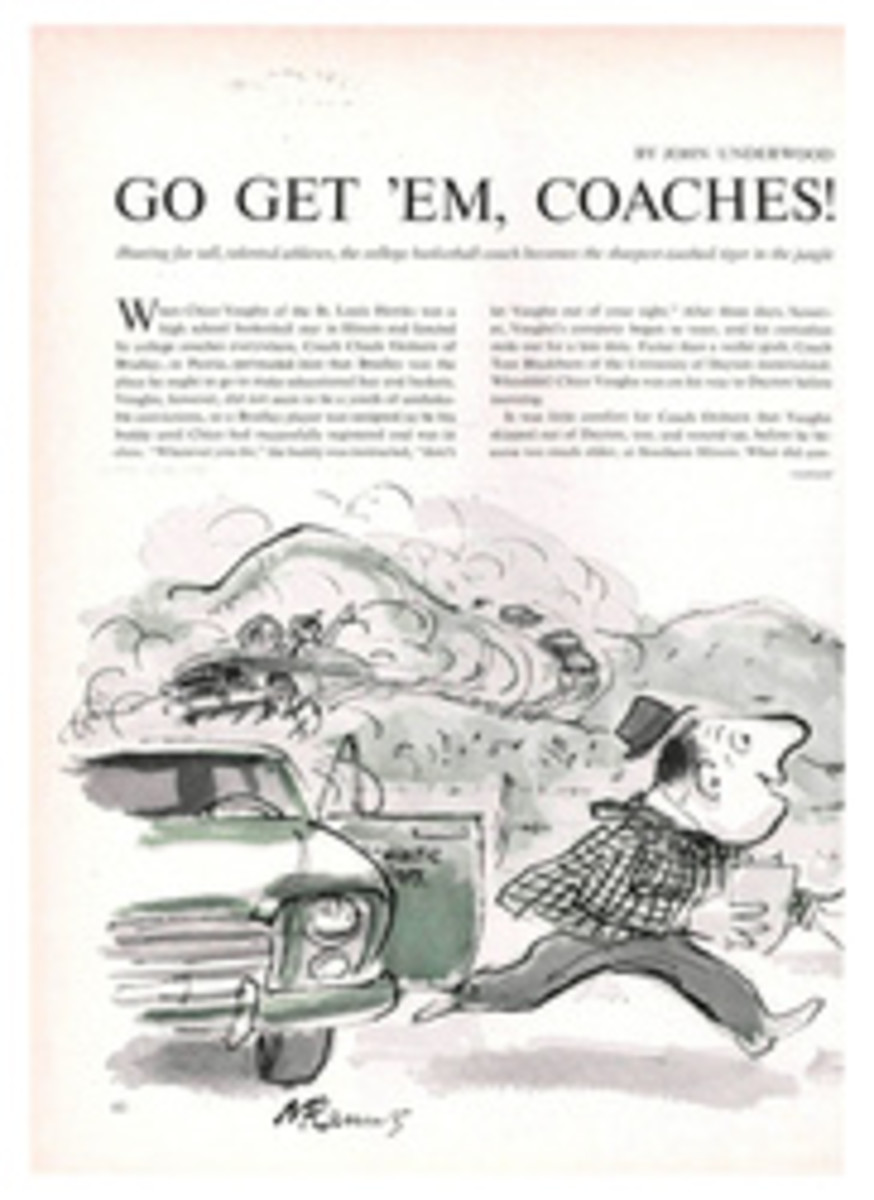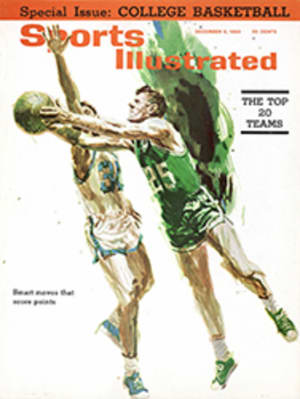
THE SEASON TO BE MERRY
All too often in recent years mechanical toys have tended to mimic atomic weapons or space vehicles. Therefore, it is pleasant to report an innovation—a trend, perhaps—for the 1963 Christmas season. Some of the best games being offered are mechanical miniatures, fully playable, of real-life sports or sporting situations.
One of the most imaginative is Jungle Hunt by Hubley ($18.95). It is primarily a child's game, but a surprising number of adults have been known to enjoy children's games. You probably have seen similar models in penny arcades or amusement halls. In front of you is a small, boxed-in jungle, complete with trees, heavy brush and boulders. In a clearing stands a brave white hunter, rifle in hand. Outside the box and attached to it is what looks like a sawed-off shotgun. When you turn it, the hunter turns. When you pull the trigger, the hunter shoots.
The game runs on batteries. After you start the motor, animals begin appearing, one by one, from behind the bushes—a lion over here, a rhinoceros over there. Turn the hunter toward the visible animal and blast away, but do it quickly. The animals disappear as they came, and unless you hit them (there are no bullets, only a spring that tips them over) they keep reappearing. To further harass you, the animals do not appear in any set order. You cannot study their patterns and lie in ambush. Besides, that would not be sporting.
Snowbound and itching to swing a club, the frustrated golfer may get a few kicks out of Rayline Golf Course ($15), a realistic little game suited to the living room. The course—nine tees, four greens—fits nicely on a card table. The fairways are felt, the greens sponge rubber. Sprinkled casually around are a few spruce trees, three sand traps (with real sand) and a brook (dry). Four plastic players each carry a bag containing a driver, seven-iron, wedge and putter. There are golf balls, naturally, pea-size.
The idea of the game, as in golf itself, is to put the ball in the hole. You take the driver, insert it into the hands of your little player—if you don't like his grip, there's nothing you can do about it—and swing the club by turning a knob attached to his back. Your first few shots probably will scuttle along the ground, but with practice you will be able to loft the little ball over a spruce tree, off the table and into your guest's drink. If you can't seem to get the hang of it, see your pro.
Pro Bowling by Milton Bradley Co. ($13) is an uncomplicated game, the best kind. The lane is three feet long, with gutters on either side. At one end is a pinspotter, nonautomatic. At the other end is a movable plastic bowling man with a triggerlike right arm. Place a bowling ball the size of a marble in a groove beside the man, aim him (and the ball) down the lane, pull back the right arm and release. So the ball goes in the gutter. Try again. Etched on the lane are spots to guide your shot, so you should improve. This is a pleasant little game. Its only drawback is the monotonous spotting of the pins, a reminder of prewar days.
Pegity by Parker Brothers, Inc. ($2) is an old, old game, so easy to understand, so intricate in its strategy. Equipment consists of one square pegging board with 256 holes and a whole bunch of colored pegs—red, blue, green, yellow. Four can play, but two is better. Take one color, let the opponent have another. Peg in turn, and try to get five of your pegs in an uninterrupted row in any direction on the board.
It isn't easy. You may get three in a row with no trouble, but then your opponent will block (i.e., put his peg) one end. You can then make it four in a row if you want, but he will block the other end and cut off that threat. So you must do it more subtly. Perhaps you can work it so that with one peg you have three in a row going twice, this way and that way. Now your opponent can't block both. As in football, a good offense is the best defense, but watch it. As you peg away with an eye to your own five in a row, the pegs your opponent is using to block you may be forming lines of three or four in a row themselves. You have to be alert.
One last word about Pegity. It also is an interesting game for children too young to understand it. The various pegs, colored brightly, can be arranged in grand designs. Children sick in bed have been known to play with it for as long as five minutes.
Tric-Trac is another old game that requires nothing more than dice, paper and pencil. However A&L Game Co. puts out a handsome mahogany box (Royal Tric-Trac, $12) in which to roll the dice and keep score. You start with nine numbers, one through nine, on the scoreboard and as you roll the dice you try to cover up as many numbers as possible. Low score wins. It works like this: on your first roll you get a five and a three. It is your privilege to cover up your five and three if you wish, or any other eight combination, seven and one, for instance, or even four, three and one. But in Tric-Trac it is wise to eliminate high numbers when you can, so proper strategy with a five and three would be to cross off your eight. Roll again: a 12. Cross off nine and three, though you could take seven and five if you cared to. On your third roll you get another eight. With eight itself already crossed off, take seven and one. Now you have only two, four, five and six remaining. On your fourth roll you get a two and one. That's tough luck. Since three and one are already crossed off, all you can do is eliminate two. Because your one can't play, you are finished. No more rolls. You are left with four, five and six, or a total of 15. Now it is the next player's turn.
In Tric-Trac you roll until you cannot play one (or both) of your dice. Remember that it is not necessary to roll the exact numbers you have left. If you have one, two, three and four remaining, and you roll a double five, that is splendid. Ten eliminates all your numbers (and you get double for that). But if you roll five and six, that's disastrous. You have no five, no six, no combination that makes 11. You're dead. But even so, have a Merry Christmas.

